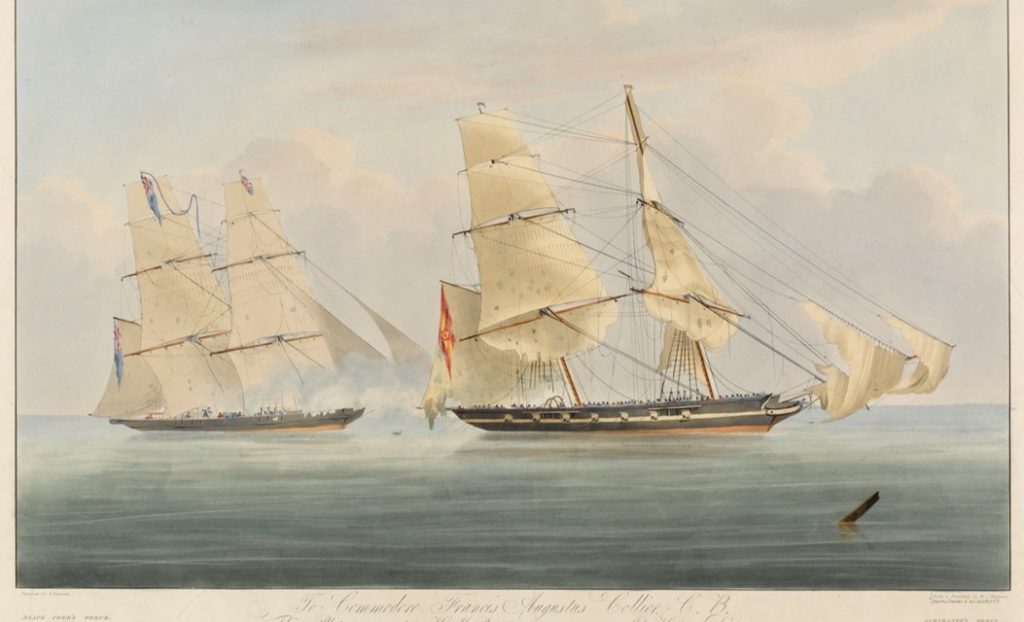Research Team
The research team is made up of faculty and students from the Cal Poly History Department including:
Matthew S. Hopper (Professor), Jessica Smith (Student Researcher) and Nishanth Narayan (Student Researcher)
Acknowledgements
This project was sponsored by the College of Liberal Arts, the Office of Student Research, the CLA Circle of Giving, and the Office of the Provost & Executive Vice President.
Captured Slave Ships and the Abolition of the Slave Trade
Background
After abolishing the slave trade in its empire in 1808, Great Britain created a network of treaties with other European powers authorizing the Royal Navy to search and condemn suspected slave ships. Captured ships faced trial at Vice Admiralty Courts or Courts of Mixed Commission in Sierra Leone, Cape Town, Havana, and elsewhere. The correspondence produced by these cases has been preserved in an uncatalogued and underutilized 89-volume record group from the High Court of Admiralty called HCA 35 – Slave Trade Adviser to the Treasury: Report Books – in the National Archives (UK). Using digital photographs of these volumes, the research team is working to assemble the first comprehensive database of these extensive records.
The HCA 35 Database
In cooperation with faculty and students in the Computer Science Department, computer science and history majors have been working to together since 2019 to extract data from the volumes and create a beta version of a searchable database for use by Cal Poly students in HIST 308 – The Transatlantic Slave Trade – prior to being made available to the public. Each student in the class writes a research paper on one captured slave ship from HCA 35. The database will allow users to search for slave ships and view the documents associated with their capture and trial. Students will use these records for their research papers in HIST 308 and other courses (including HIST 303 – Research & Writing Seminar: Abolition; HIST 429 – Precolonial Africa). Once the successful model of the database has been tested, the team will work to make the database and the digitized documents available to the world via a website hosted by Cal Poly.
Captured Slave Ships
The Royal Navy began patrolling the West Coast of Africa in 1808 and captured more than 1,500 slave ships before 1867. When Royal Navy vessels captured suspected slave ships, they towed or sailed them to ports of adjudication, where the ships would stand trial and judges evaluated evidence to determine whether the seizure of the vessel was justified under international law. Although most ships were condemned, many were restored on technicalities because treaties provided loopholes including exceptions for ships of particular nations in particular locations. For example, for much of the early nineteenth century, Spanish and Portuguese ships were permitted to engage in the slave trade south of the equator, and slave traders could be entitled to compensation if their ships were captured on or below this line. Many ships were appealed to the High Court of Admiralty in London on such technicalities. Condemnations of slave ships resulted in cash bounties (prize money) for the crew of the capturing vessel. Enslaved Africans removed from these ships became known as “Liberated Africans,” but they were actually indentured for up to 14 years. Because Treasury would not authorize payment of prize money to Admiralty without verification, the records of seizures, court cases, and appeals contained in the HCA 35 volumes make these the most complete records of captured slave ships.
Summer 2021
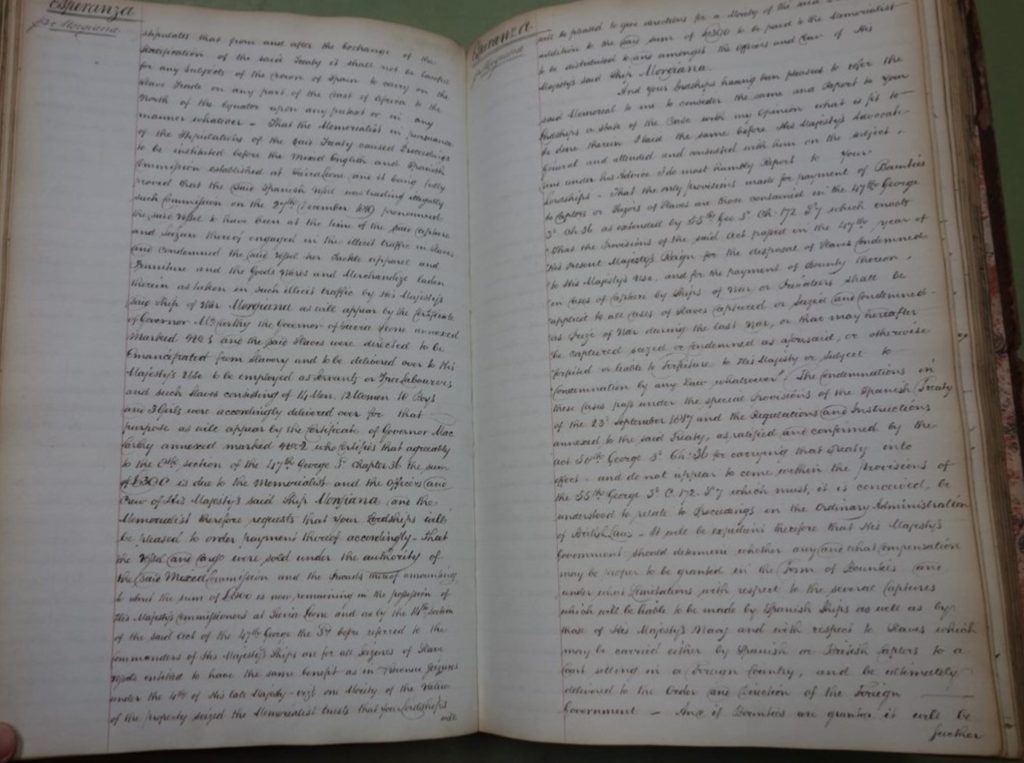
This summer, two student researchers, Jessica Smith and Nishanth Narayan, worked with digital photographs of volumes from the HCA 35 series to index an additional 15 of the 89 volumes, bringing the total number of indexed volumes up to 60 and the total number of entries up to well over 5,000. The research required skills in reading nineteenth-century handwriting and extracting data points from 400-800 pages of text per volume. The researchers identified the names of the ships (cases), the dates of capture, capturing vessel, place of capture, court of adjudication, number of captives, and other data points and added these to the database in Excel using the existing template. Students will begin using the new database for their research papers in HIST 308 in Winter 2022.

2021 SURP Sponsors
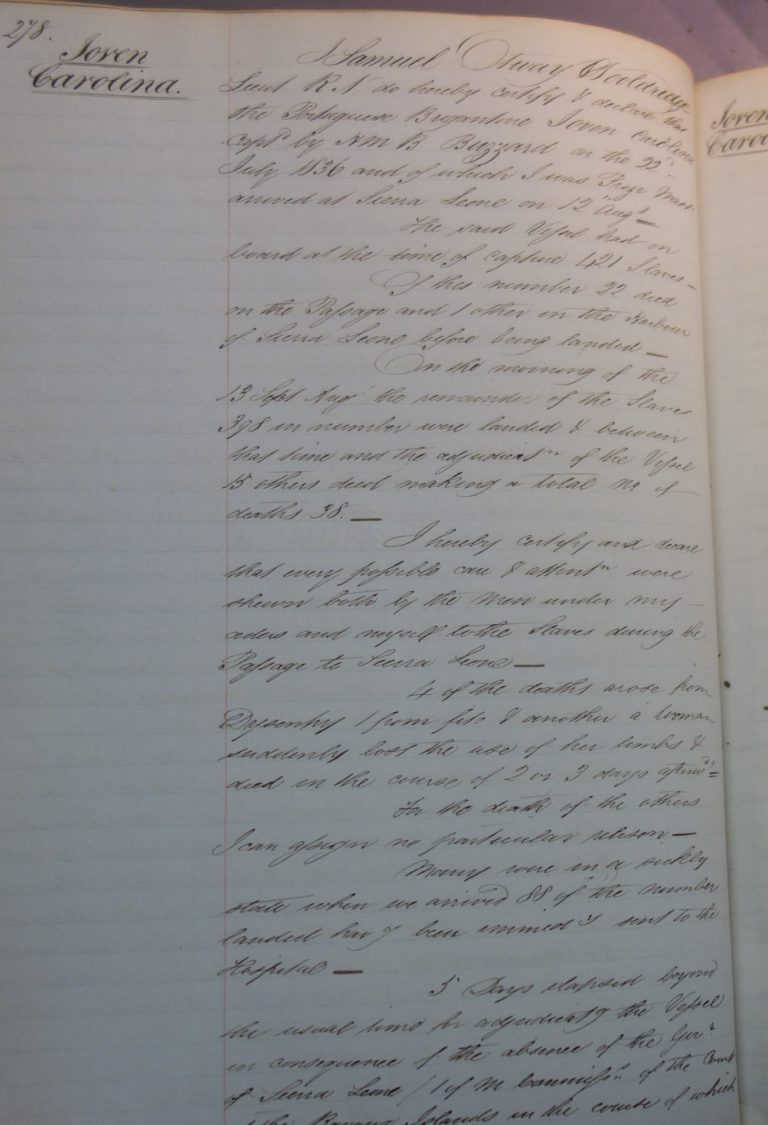
Selection from account of the capture of the slave ship Joven Carolina by the HMS Buzzard in 1836 including an account of the causes of death of 38 enslaved Africans who were among the 421 captives aboard the Joven Carolina but died before arrival in Sierra Leone. (From HCA 35/40 catalogued by Nishanth Narayan)
Sample Excerpt from the Database
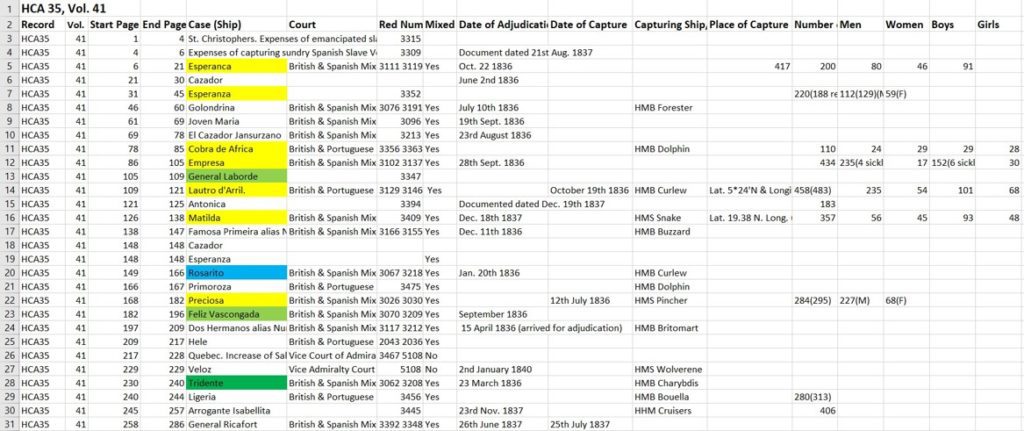
Excerpt of index of Vol. 41 by Nishanth Narayan (Aug. 2021)
Sample Excerpt from the Database
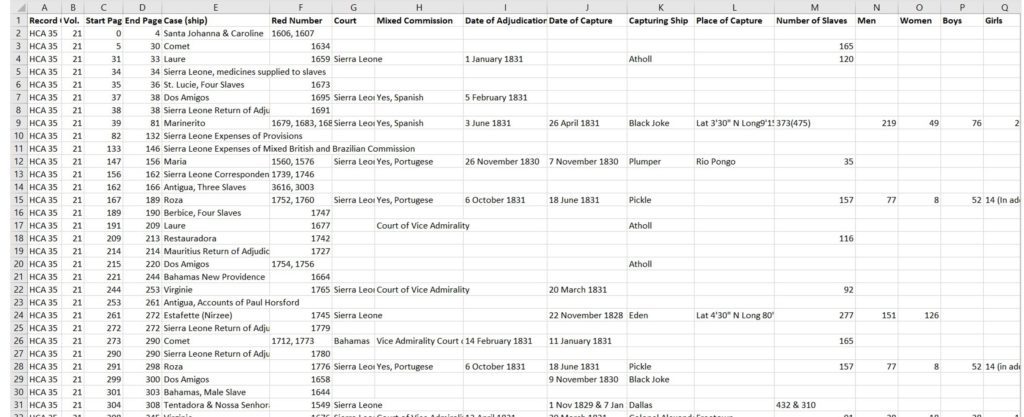
Selection of database for HCA 35, Vol. 21 completed by Jessica Smith (Aug. 2021)

